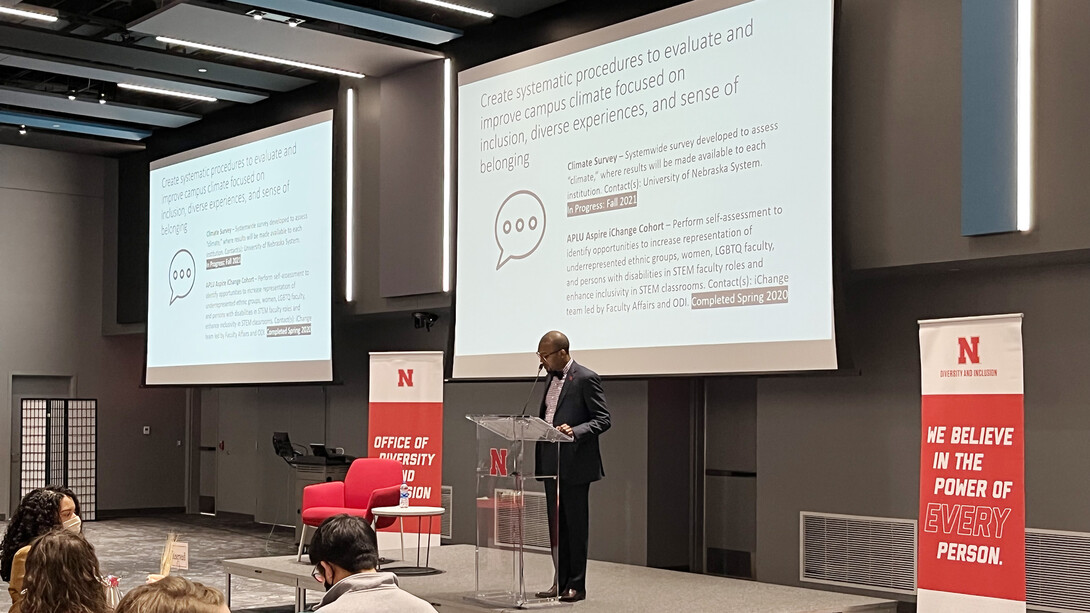
The third annual State of Diversity at the University of Nebraska–Lincoln highlighted progress, looked toward upcoming opportunities and facilitated a discussion on how institutions of higher education can be leaders in furthering diversity, equity and inclusion in local, state, national and global communities.
The event, hosted by the Office of Diversity and Inclusion, was held in a hybrid format Oct. 28 and will be available for later viewing on ODI’s website.
Following a land acknowledgement from Lin Quenzer, pastor at Sacred Winds Native Mission UMC, Chancellor Ronnie Green gave the welcoming remarks, which included a short update on the work of the Chancellor’s office, and the Journey for Anti-racism and Racial Equity.
“(I wanted to) reassure you that the concerns expressed in the last year are not forgotten,” Green said. “What you share with me and the leadership absolutely matters …
“While there might exist some structural limitations to what needs to be done now, it doesn’t mean that we do not work toward this goal or these goals in the journey, and I commit to you, we’re doing just that.”
Green said he will speak more about the Journey’s ongoing work with the Journey co-leaders during the CEO Action event at noon Oct. 29. Registration is still open to attend the virtual event, which will be a discussion between Green, the co-leaders and Marco Barker, vice chancellor for diversity and inclusion.

Speaking during the event, Barker gave a summary of the efforts of the Office of Diversity and Inclusion and campus partners over the past year. He highlighted successes, including Executive Memorandum No. 40, which established the Chosen Name and Gender Identity Policy across the University of Nebraska system; the launch of NCLUDE — Nebraska Community of Learners Understanding Diversity through Education — and the inclusion of Nebraska as an advisory institution in the First-gen Forward Institutions.
Additionally, Barker shared new data in diversity among students enrolled, graduation rates, faculty of color and more.
Some highlights include:
A 2% uptick in graduation rates for first-generation students in five years.
The number of students of color in each graduating class increased from one in five (20%) in 2012 to one in four in 2020 (27%).
A demographic increase in faculty of color from 18.9% in 2014 to 22.8% in 2019.
“As we can see here, the percentage of graduates of color, students who graduated, has gradually increased over the last nine years,” Barker said. “That is very promising for the institution, and there is something happening at Nebraska. While we are graduating students of color, we recognize there are still gaps that exist.”
In comparison to its Big Ten peers, based on the most current data available, the university is last in faculty of color (17.3%) and students of color (18%) but is 10th in staff of color (11.9%).
Barker shared optimism about progress made and the possibility for growth ahead.
“We recognize that we are Nebraska, in the middle of everywhere, as we often refer to it, and so we have a real opportunity to think about how we frame the work that’s happening here that excites and motivates individuals to see Nebraska as a place of choice for them to work and study,” he said.
SOD concluded with a panel discussion with four diversity and inclusion leaders in higher education. The discussion was moderated by Barker and included a question-and-answer session with virtual and in-person audience members.







